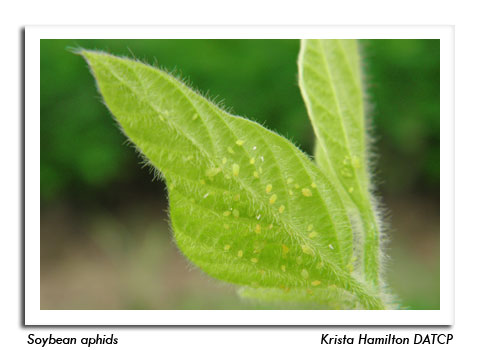
 |
|
|
Soybeans
Volume 59 Number 9 Date 06/26/2014 SOYBEAN APHID - Densities remain very low and aphids have colonized no more than 15% of plants at most sites. Average counts in 12 of 36 (33%) soybean fields sampled this week were less than two aphids per plant and 13 per infested plant, based upon examination of 40 plants per field. Twenty four of the fields had no aphids. Populations are expected to increase next month as soybean fields enter the reproductive stages of growth. Routine monitoring should begin by early July. ROSE CHAFER - This defoliating scarab beetle has become more common in the past two weeks and light damage is now evident in soybean fields on sandy soils in the central areas of the state. Defoliation levels, however, have not exceeded 30% in any vegetative field checked as of June 25, so treatment is not warranted. SAND CHAFER - Localized heavy populations were encountered in the Centerville area of Trempealeau County on June 24. These beetles, notable for their similarity to Japanese beetles and an attraction to light-colored clothing, are not known to cause economic damage to crops in the adult stage, though damage to potato tubers by the immature grubs has been reported. Only minor leaf feeding was observed in the fields with significant numbers of chafers. -- Krista Hamilton, DATCP Entomologist 



|
|
|